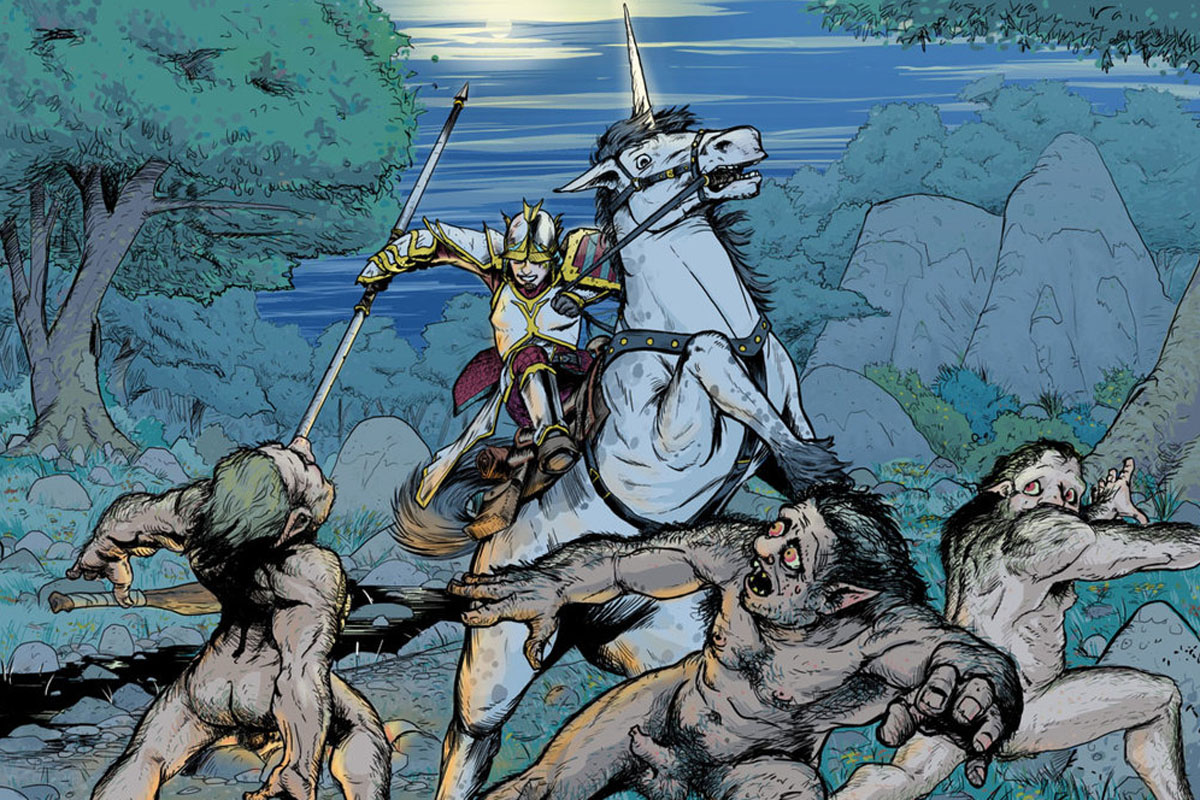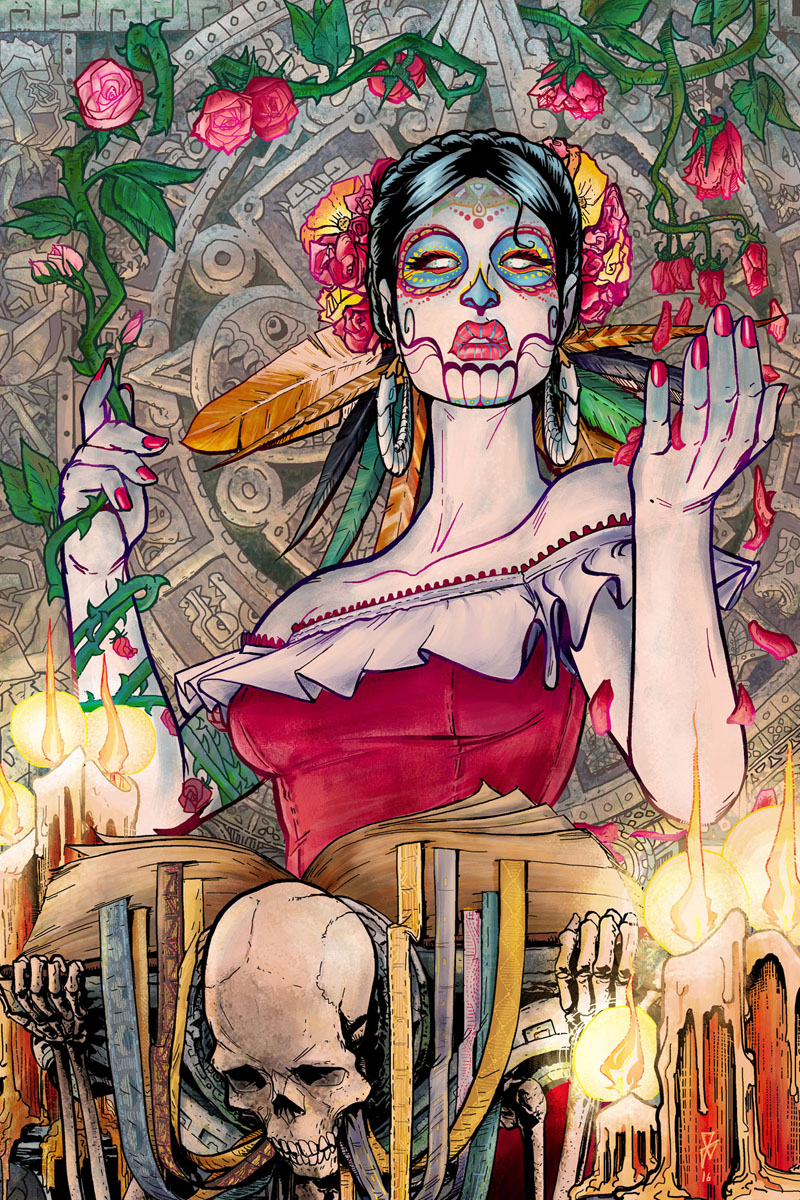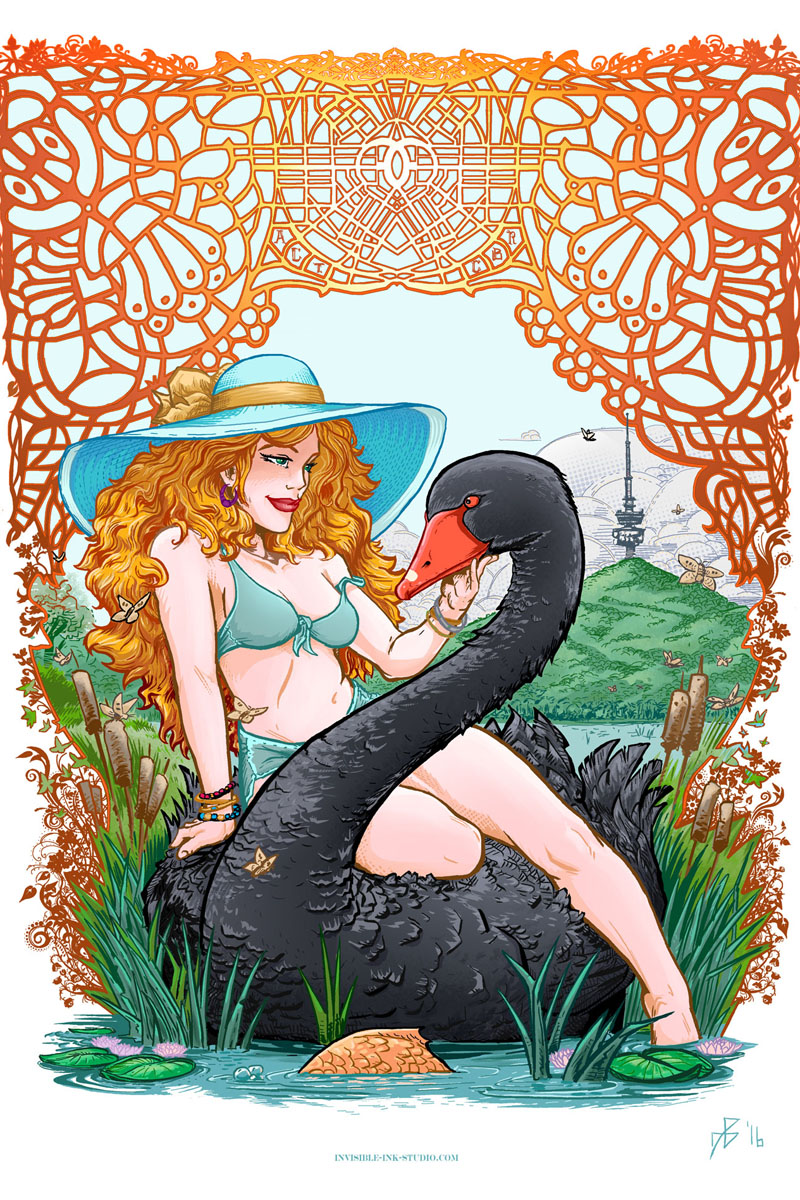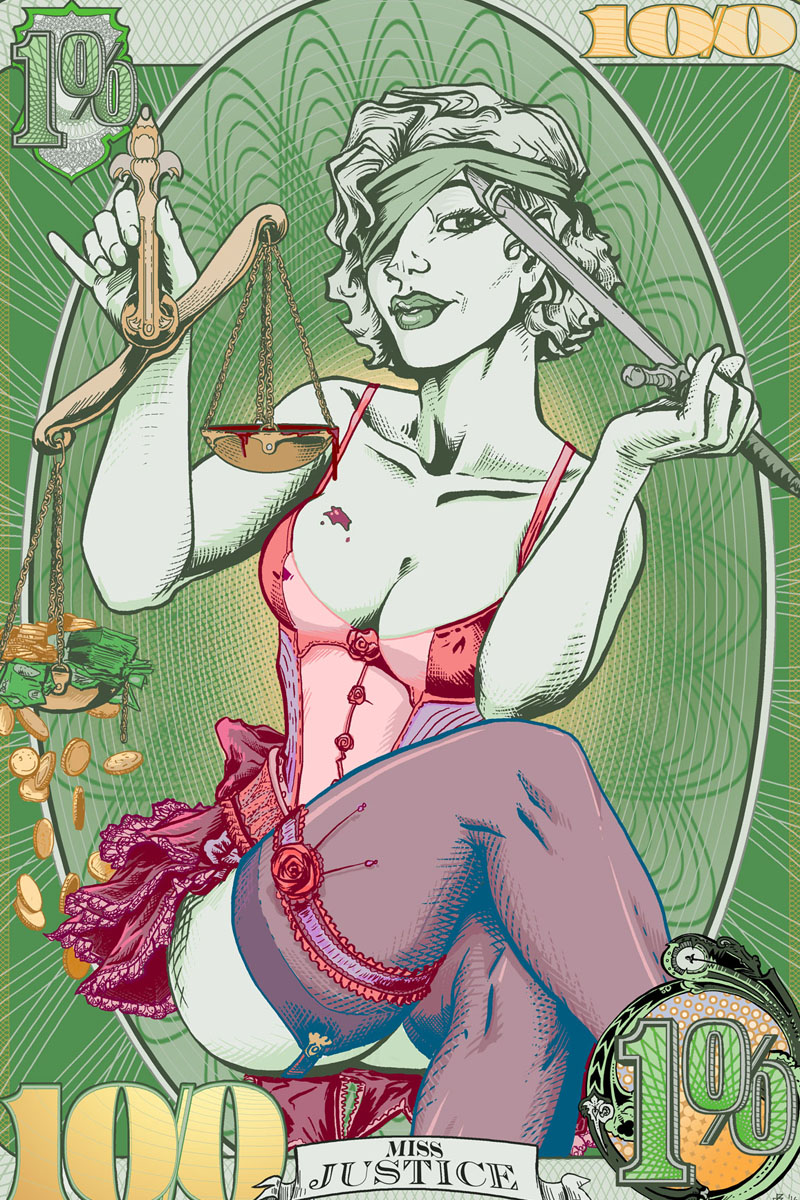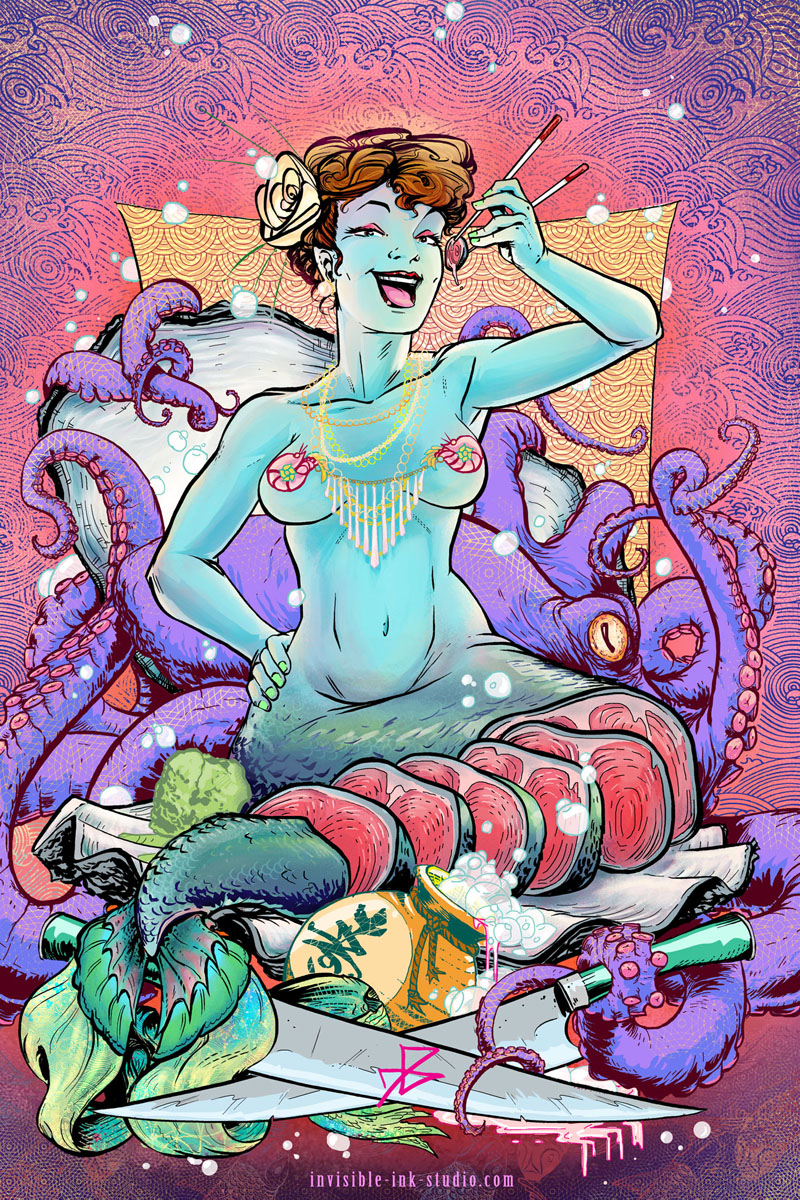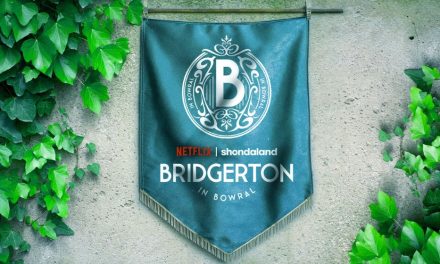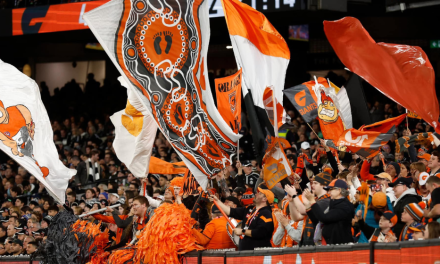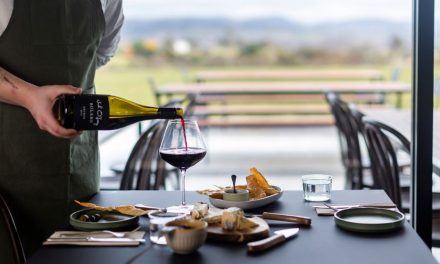Remember that awesome illustrator provided by OutInCanberra who drew guests’ outfits on the second night of FASHFEST? His name is Daniel A. Becker, and runs his own studio, Invisible Ink Studio, and we took time out to chat with him about where his art comes from – and where he’s headed.
Ever since he was 6 or 7, Daniel has been enamoured with comic book artwork and illustration. “I think what usually turns a person who can’t draw into one who can is simply persistence and obsession,” explains Daniel. “However, despite always drawing and always wanting a career in art, I didn’t take it seriously until I was about 28, when a friend and I collaborated to produce out first four comics.”
Upon graduating high school, Daniel studied at art school at the University of Arizona. After two and a half years, he decided to leave his course, as it wasn’t giving him enough of a focus on illustration, something he was craving. “I studied painting, figure drawing, colour concepts, but I always felt it was too 101 general,” says Daniel.
Fast-forward 10 years and Daniel finally learned (and is still learning) what it takes to be an illustrator – discipline. “Accountability, craft, style, and professionalism all come down to a regime of discipline that one has to learn for themselves,” he explains.
After branching out from comics to doing commissions for friends and friends of friends, Daniel decided he had to set up a more formal business front, and Invisible Ink Studio was born. “I won’t say I’ve gone entirely ‘pro’, but I like to think I’m on the right track,” he says.
In the age of digital communication, there’s a lot of competition when it comes to being a successful freelance illustrator. “There’s a lot of freelance art job sites out now that allow you to bid on projects and literally work with clients all over the world, which is pretty great,” he says. “However, it also means you’re now in the same pool of artists from all over the world, which is a lot of competition and can mean people drive down their prices to get jobs. Before you know it, artists are practically working for free.”
Daniel’s tip for making it in the world of freelance art? “I think the best way to be successful is to be good, be positive, flexible, and develop good relationships with people,” he says. “In short, don’t be a jerk.”
Daniel’s portfolio features a range of amazing design work for businesses, as well as commissions for T-shirt designs and illustrations. “The last private commission I did I was really happy with, because I was really stacked up with a few other projects,” he explains. “It forced me not to think too hard about the image and just let it happen, and more importantly, get it done.” Daniel is currently working with a US-based writer, illustrating a comic book, and he plans on writing and drawing the second chapter of his own comic book title, Master & Apprentice.
Daniel switched from the traditional pencil and paper to a purely digital workflow in 2012, after moving to Australia and discovering it wasn’t feasible to bring his entire set up with him. “I work with a Wacom Intuos 4, which is a large drawing tablet, my Macbook Pro, and Photoshop,” he says. “It took a lot of getting used to, which is one of the drawbacks of making the leap, but like all fields in art, or any new tool that comes along, there’s an initial learning curve one must get around.”
His favourite subject to draw – girls. Girls and monsters. “I’ve really come to admire and love a lot of the Heavy Metal artists from the 80s and 90s who did bizarre, sexy, weird art,” Daniel explains. “It’s made me think, ‘I want my art to be sexy and weird’.”
Daniel was recently a part of FASHFEST, working with his iPad Pro and Apple Pencil to illustrate the outfits of guests and models for OutInCanberra. “The best part of the event was the challenge of having to draw – and draw well – really quickly,” he recalls. “Before OutInCanberra got in touch about drawing at the event, I had seen fliers for the show and it made me think ‘I should really do more fashion drawing’. I think some artists take fashion for granted and when it comes time to draw someone in a story, they’re dressed rather blandly.”
In the future, Daniel hopes his artwork, once viewed, will cause all of humanity to embrace each other with genuine love and compassion, forget all their petty grievances, and build a better world, together in peace. “It’s a long shot, I know,” he laughs. “But hey, one can dream.”
